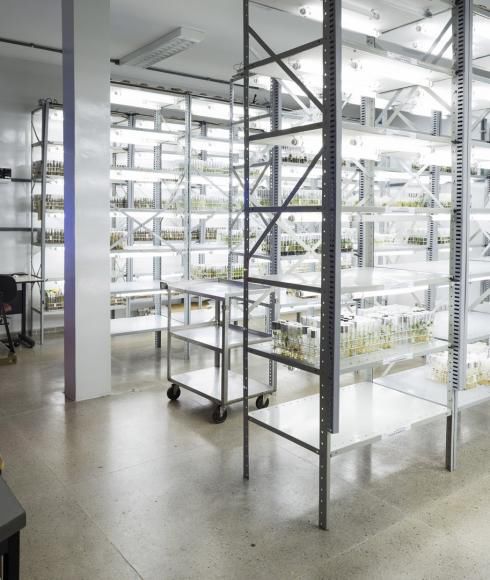Amon Carter Museum of American Art
3501 Camp Bowie Blvd.
Fort Worth 76107
www.cartermuseum.org/
Dornith Doherty: Archiving Eden
August 12 – to Jan. 14, 2018
Free lecture and book signing, Nov. 4 at 10:30 a.m.
Dornith Doherty said that one of the things she thought when she first came to art was “what a powerful way to communicate.”
And her show, Dornith Doherty: Archiving Eden, tells the story of the scientists working to preserve the planet’s biodiversity and asks viewers to “engage with the notion of what is the future of the planet.”
Her show is comprised of 15 images of documentary style photos and collages made from X-rays taken at prominent seed banks, which preserve plants in order to stop species loss, around the globe. One of the seed banks included in the show is the Svalbard Global Seed Vault which is located in Spitsbergen, a Norwegian Island south of the North Pole. This bank is unique because it holds duplicate seeds from other banks in case of a disaster.
The exhibition is located at the Amon Carter Museum of American Art and will be on display until Jan. 14, 2018. There is also a book that accompanies the show which will be sold at the Museum Store.
Doherty, who lives in Southlake, is a university distinguished research professor at the University of North Texas (UNT). She graduated from Rice University with a bachelor of arts and earned a master of fine arts in photography from Yale University.
Doherty talked with the Fort Worth Business Press about the exhibition.
What inspired you to combine art and science?
My original interest was in this kind of simultaneously apocalyptic and utopian endeavor of trying to create, basically, a Noah’s Ark on the North Pole, so I started with a documentary approach and quickly found that the kind of dramatic and metaphoric aspects of that were better served through the digital X-ray collages.
Do you view the project as two different works?
This is a dual project. They were made at the same time and place. The X-ray collages that you see were captured at the seed banks themselves using the research X-ray machines [and] the actual seeds and tissues in the collection. … There’s four continents, almost 20 seed banks, so I traveled all over the world to photograph these different attempts at preserving the biodiversity of plant life and then while I was there if they had a research lab with an X-ray machine they would allow me to X-ray at that time and I would bring those back to my studio in Texas and create the collages that you see on the wall.
How do art and science crossover?
I think they are very related. … They share some approaches in terms of you have a subject that you’re really really interested in and you experiment to create your work. I do think that there’s a big commonality between the two. This work is directly involved in it through its subject matter in a scientific endeavor. I’m looking at these scientists’ attempt to create a state of suspended animation in living plants, living materials. Which, of course, is impossible to do. So that kind of tension between the hope and what’s actually possible is very interesting to me.
What was it like working on something for so long?
It was a challenge because of the length. It’s the longest project I’ve ever worked on and it could keep going. There’s 1,700 seed banks in the world. What I did is I focused on the main national banks that had something really special about them. In this show, there’s the oldest and most comprehensive seed bank in the world which is in St. Petersburg, Russia. There is the northern most one. There is Svalbard which is only 600 miles from the North Pole. … There is one from Brazil … and Ladybird Johnson in Texas. It kind of goes from very close to home in Austin to the North Pole. That’s how complicated this project is.
Are you trying to promote a certain action with this work?
I just want people to consider it, to have a conversation about preserving biodiversity, but what I learned is that many times these scientists are able to –individual action counts– and so they’re able to perhaps save a species. Sometimes with climate change and the dire situation that we have with the environment right now, you feel like individual actions don’t make a difference and what I learned through this project is that individual actions can. … I’m not trying to teach anybody anything, I’m just raising questions but that’s what I learned through the project is how you really can make a difference.






